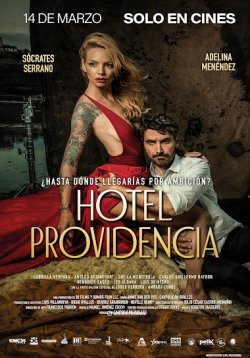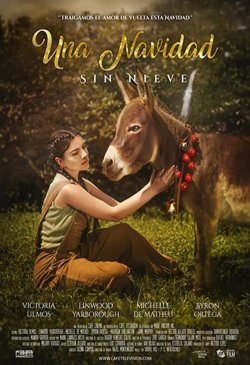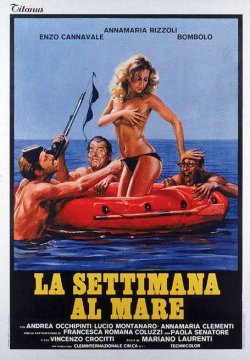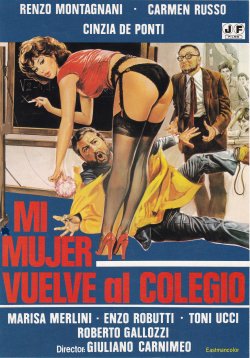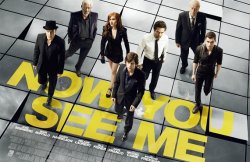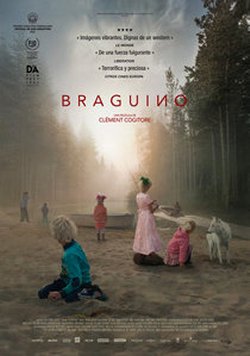 |
|
SINOPSIS
En un lugar de Siberia donde solo se puede acceder a través de un helicóptero viven dos familias aisladas pero a la vez enfrentadas por un río...
INTÉRPRETES
Documental
MÁS INFORMACIÓN DE INTERÉS
![]() CRITICA
CRITICA
![]() BANDA SONORA
BANDA SONORA
![]() CLIPS
CLIPS
![]() CÓMO SE HIZO
CÓMO SE HIZO
![]() VIDEO ENTREVISTAS
VIDEO ENTREVISTAS
![]() AUDIOS
AUDIOS
![]() PREMIERE
PREMIERE
 PREMIOS Y FESTIVALES
PREMIOS Y FESTIVALES
- Premio Zabaltegi-Tabakalera en el Festival de San Sebastián
- Mención especial del Gran Premio de la Competición Internacional en el Festival Internacional de Cinema de Marsella (FID)
- Mención especial del Premin Lycéens en el Festival Internacional de Cinema de Marsella (FID)
- Mención especial en el Moscow International Documentary Film Festival DOKer
 INFORMACIÓN EXCLUSIVA
INFORMACIÓN EXCLUSIVA
ENTREVISTA AL DIRECTOR...
I was struck by the power of the images in Braguino, the primitive force radiating from them...
For a film like this, when you’re in a position to capture things, the power of the images comes from the people and places in front of your camera. In Braguino, the power you mention emanates from the people of Braguino and the landscapes.
And then there’s the whole editing process. When an image no longer seizes me, I like for it to disappear. And then not necessarily replace it immediately by an even more striking image – that would lead to an escalation of authoritarian images – but rather allow it to not dissolve. I like to seize the intensity in a gaze, in the moment when you encounter a new face or a presence. As a Visual artist I’ve worked a lot with black and darkness, but in Braguino, I used it as a way of cleansing the eye. As a way of getting ready to welcome a new image.
How did you get to know the Braguine family who live lost in the depths of the taiga?...
I started working on Braguino quite some time before 'Neither Heaven Nor Earth' (2015).
In 2011, I had just finished my first documentary, Biélutine, about Russian art collectors.
I had just shot, indoors, for a dozen days, in nothing but candle light, a film centered on speech. And I thought that for the next film, I’d like to go in a radically opposite direction from that suffocating shoot and film wide-open expanses. I had heard, like many have, about the Old Believers, a minority group of Orthodox faith in Russia.
As early as the Middle Ages, they slowly moved deeper into the forest to flee the persecution of the State and the Church. One thing leading to another, my investigation led me to Sacha Braguine who came from a community of Old Believers.
I was also guided by a desire to tell a story about childhood and forests. To me, forests are symbolically the space of fiction, a space of contemplation and fear, where we imagine monsters, where epic tales come to life, where the first childhood homes are built, cabins and tree houses. I grew up in a valley of the Vosges Mountains, surrounded by a forest. That’s what nourished and built my imagination. I wanted to re-examine that.
However, I wanted to address this in a more extreme situation than my own personal experience: how about a horde of children living freely, cut off from the world?
In the film, you barely hint at their religious origins...
The question of religion and worship is not, strictly speaking, the main subject of the film. And in fact, the more I researched these communities of Old Believers, the less I was drawn to them on this specific matter. I was interested in something of a different nature; it had to do with what stems from the building of a community, and what’s at stake when a group of humans gather in an isolated location. Braguino is in the middle of Russia, in the gulag Siberia, a climatic hellhole where temperatures drop to 40 below zero in the winters, where summers are suffocating, and black mosquitoes eat you alive. This harsh territory leaves you with only two options: live in the cities and villages, in a pretty violent Far West-like environment, abandoned by everyone and the State, or join the communities of Old Believers in the woods. Sacha Braguine wanted to escape from both alternatives. He left in the seventies to build his own world, with his own rules. Thanks to the Russian journalist Alla Shevelkina, I was able to learn more about Sacha. And then decided to take the long trip to Braguino.
How did your location-scouting trip unfold?...
The trip was symbolically very powerful. Over the course of the four-day trip, heading in the opposite direction of the earth’s rotation, I saw nothing but sunset. I gradually witnessed myself moving past the markers of civilization: loss of Internet, then, loss of a phone connection. And then the last radio transmitter… Roads became dustier and dustier, then turned into tracks, and finally there were nothing but landing fields.
We knew nothing, other than the GPS coordinates of this nearly inaccessible place that required several days travel by boat along the Yenissei River, or a long helicopter flight. We didn’t know if Sacha and his family still lived there, nor if they’d be there to welcome us when we arrived.
As we moved up through Siberia, there ended up being nothing but a couple rundown shacks, and men to drunk to stand on their own two feet. There was something very end-of-the-world-like. I was afraid of where we would end up. And even more so because I’d left on this trip with the idea of making a film that would bring me back to the joys of childhood in the forest… But my arrival in Braguino confirmed the choice I had made: I was facing a small paradise, perhaps the most peaceful place I’ve seen in my life.
And the encounter with the Braguine family?...
They instantly welcomed us to their table as friends. But I was confronted with a problem of dramaturgy. I was facing the quiet life of people who go pike fishing and grouse hunting in a tiny paradise. But paradise has no stories to tell so I thought that I could maybe work on a series of photos that would tell the story of a possible paradise, of a utopia. But little by little, I observed the village organization. And most importantly, I understood that on the other side of the barrier that ran through the village, there lived another family: the Kiline’s. The Braguine’s really did not want to talk about them.
I realized that something wasn’t quite right.
What exactly happened between them?...
The Kiline’s settled down in Braguino fifteen years after the Braguine’s. They too wanted to escape from the Siberian Far West and the sectarian communities. They realized that Sacha had managed to build a small paradise and even grow watermelon… So they wanted to join them and participate in the utopia. But as soon as they settled down, they stopped getting along. They began to build barriers, to split up hunting grounds, to poison each other’s dogs, and eventually stopped speaking to each other. I had found my story: a story about the impossibility of building a community, the failure of a utopia, of sharing an ideal.
If you deconstruct this situation, as ordinary and as vertiginous as it is, you find every single possible layer of conflict. Neighborly rivalry, just like anywhere else, crystallizing irreconcilable stories and ideologies. A powerful conflict fermented in Braguino. At the same time, it’s almost a biblical conflict, like « Cain and Abel » — the Kiline and Braguine women are bound by blood: two irreconcilable sisters.
Sacha Braguine boils it down to «They occupy the territory; we’re here to live on it. » when talking about the Kiline’s…
Yes, the film takes on the shape of a western at times, especially from a political perspective, with a confrontation between two ideologies. Both families relate very differently to the rest of the world in terms of the use of resources and mankind’s position in the natural world. As I was leaving, I realized that the ultimate layer of conflict, in this story of otherness would lead to a Shakespearian tragedy, if the young Braguine girl fell in love with the older Kiline boy. And if it’s not them, it’ll be two other children. Inevitably, Romeo and Juliet are bound to arrive someday!
Why did you choose to only tell the story, and film, on one side of the barrier?...
When I understood the reality of Braguine’s situation, I understood that I would need to choose sides, that it would be impossible to go over to the other side, and that I would have to film the Kiline’s as silhouettes only. I wasn’t sure how that would work out; reducing the Other to a ghostly figure in a film that’s fantasy or science fiction.
But I had this intuition while we were shooting, and the editing confirmed this; those silhouettes allow us to project all the conflicts and troubles of the community. They absorb them all. Because of the isolation, the Braguine’s hold the Kiline’s responsible for everything, it’s as simple as that, and often in pretty crazy ways too.
Tell us about your second trip?...
I arrived with Sylvain Verdet, my director of photography and Alla, not only as an interpreter and journalist, but also as a human connection with the family. She had the emotional and psychological intelligence of knowing where we could go, what we could say or not, and knew the ground rules. For a brief moment, they were curious about the camera, but then the Braguine’s quickly forgot about it. The relationship of power and of suspicion that sets in when you start filming didn’t occur because images aren’t relevant to them. Which was very precious, because in documentary we spend a lot of time getting people to reveal themselves, to feel comfortable in front of the camera, to not to be on show and open up.
Nonetheless, you don’t hide the presence of the camera: sometimes, people look at it, or speak to you…
Not only am I not hiding its presence, I’m attesting that it’s there and using it to film an encounter. You can see in the way that Sacha and his family eyes us that we live in different worlds. They’re not used to having visitors, it’s a notion that does not exist for them; others are inevitably experienced as a curiosity, something to examine.
As soon as we got off the helicopter, I tried to use the intensity of that gaze as a hook to get the story started. You can sense the astonishment, notably among the children.
We didn’t look like Siberian people they run into, we spoke a different language… Some of them had never seen any other humans than members of their family. And me too, I was astonished to feel the children gazing at me. Me too, I was a curiosity to them; it was very strange. We needed to get acquainted and tame each other.
The shoot took place after the demanding shoot of Neither Heaven Nor Earth…
Yes! A year later, I was back on a plane…But the most challenging thing for me was that nothing happened the first week; everything I had imagined, waited for, hoped for was not happening. We were recording fragments of existence that were beautiful, that would allow to illustrate, make transitions and build characters. But nothing where I could say to myself: now that’s a scene, now there’s a story. And astonishingly, everything happened in the last three days: the bear hunt, the scene on the children’s island and the arrival of the helicopter. I knew, when we were filming them, that those three scenes would be essential moments in the film. From that point on, the characters just unfolded, a human breath arose, and the story took on a whole new dimension. During this shoot, I did nothing but capture, hope, and fear.
When the Kiline children arrive on the island, we get the impression of a highly organized army turning up on a battlefield. Did you provoke this?...
That scene truly is a geopolitical class applied to 6-8 year old children! You get the impression of a laboratory test on how to invade someone else’s territory. I just hoped for that scene, and did what was necessary for it to happen rather than not happen… Usually, the Kiline and Braguine children each take turns playing on the island, but the Kiline children were so intrigued by the camera that they gradually came closer. And then that West Side Story scene unfolded, a battle without any fighting, rival gangs occupying a territory.
As in your previous films, we move in and out of documentary, tale and fantasy...
The situation and the material made this possible. The images were documentary, very close to the ground. Especially the bear cutting scene that is almost ethnographical cinema, where I’m filming men at work, in their daily life. But for us, the bear had the same impact as a monster in a fairytale and I tried to keep this near-mythological dimension.
And then you have pure moments of escape into a fairytale world, like the moment when the little girl arrives with her pink dress and bear paws. In that kind of moment, all you need to do is be present to capture it. The bear scene was something I was not even hoping for because they only kill one or two bears a year. It serves as a counterpoint to the seemingly idyllic natural world and sends us back to the wilderness and its most brutal and terrifying dimensions. If the bear is respected, it is above all feared. Bears are the terror of the taiga, they can wreck a cabin, eat a man or a child.
And the scene where the poachers show up in the helicopter?...
The helicopter scene is central. Not only was I not hoping for it, but I didn’t even know it was possible because of how difficult and expensive it is to travel by helicopter. The poacher’s arrival, the devastation they bring with their automatic weapons, sets up the imminent destruction, the end of Sacha’s dream of isolation, or simply the end of the possibility of living together. When the helicopter arrives, in a fury, we suddenly measure the greater danger that is threatening this place. The characters of Braguino, both the children and the adults, seem very fragile and unarmed in the face of the forces at hand. That’s when the story shifts to a tragedy.
Already in 2012, the Braguine’s told me that people were starting to come and devastate the area. I took that for something that was just part of their general paranoia.
That scene raises the issue of the brutality of civilization, the rest of the world bursting in like a deux ex machina, and we can immediately sense that the battle is lost in advance.
Confronted with the bear, the Braguine’s can put up a fight; it’s basically a ritualized battle. But in the face of the poachers, they have nothing to hold on to, whether it be weapons or words. What I once thought was paranoid delusion was actually a terrifying reality that I suddenly became aware of: the world had become too small.
This microcosm I had found was not only telling me its story of a mythological community, but the workings of the world. I was also stunned on a cinematic level: I was watching the scene coming to life right in front of my eyes, as if there had been a script somewhere. We were forced to cut the camera pretty quickly, but luckily we kept recording sound.
 GALERÍA DE FOTOS
GALERÍA DE FOTOS
https://cineymax.es/estrenos/fichas/101-b/122285-braguino-2017#sigProIdb728d8c90f





